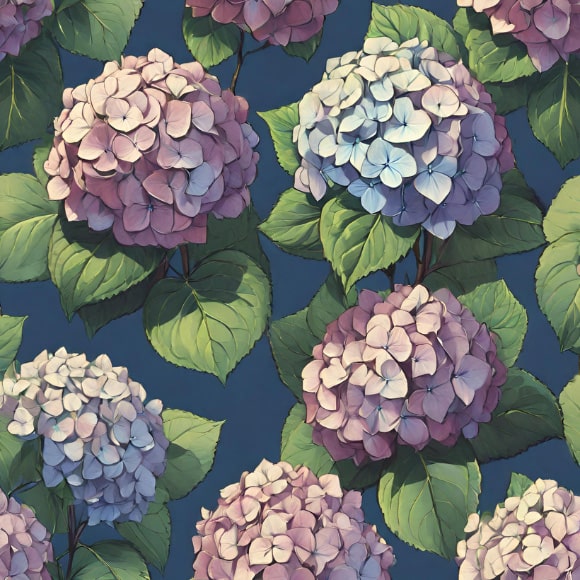
Hydrangeas are among the most beloved and iconic flowering plants, gracing gardens across America with their vibrant and diverse blooms. From the classic mophead varieties with their large, ball-shaped clusters of flowers to the delicate lacecaps and the unique panicle hydrangeas, these plants have captured the hearts of gardeners for generations. In this comprehensive guide, we will delve into the art and science of hydrangea gardening in America, exploring the rich history, the wide array of cultivars, and the essential tips for successfully cultivating these stunning shrubs.
A Historical Perspective
To understand the popularity of hydrangeas in American gardens, one must first appreciate their fascinating history. Native to East Asia, hydrangeas found their way to North America in the early 18th century. Initially introduced as ornamental plants, they quickly gained favor for their striking appearance and adaptability to diverse climates. The Victorian era saw a surge in interest, with hydrangeas becoming a symbol of abundance and prosperity.
Over the years, hydrangeas have fluctuated in popularity, but their enduring charm has ensured their continued presence in American landscapes. From the manicured gardens of colonial estates to the more informal landscapes of contemporary suburban homes, hydrangeas have seamlessly woven themselves into the fabric of American horticulture.
The Diversity of Hydrangeas
One of the key attractions of hydrangeas lies in their remarkable diversity. There are five primary types of hydrangeas commonly grown in America: Bigleaf (Hydrangea macrophylla), Panicle (Hydrangea paniculata), Smooth (Hydrangea arborescens), Oakleaf (Hydrangea quercifolia), and Climbing (Hydrangea anomala subsp. petiolaris). Each type boasts unique characteristics, ensuring there is a hydrangea cultivar suitable for every garden.
Bigleaf hydrangeas, with their globe-like blooms, are perhaps the most recognizable. These can further be classified into mophead and lacecap varieties, offering a range of flower shapes and colors. Panicle hydrangeas, on the other hand, present elongated clusters of flowers, while smooth hydrangeas are valued for their large, dome-shaped blooms. Oakleaf hydrangeas, as the name suggests, have foliage reminiscent of oak leaves, adding an extra layer of visual interest. Climbing hydrangeas, with their ability to scale walls and fences, provide a vertical dimension to garden designs.
Cultivating Hydrangeas Successfully
While hydrangeas are generally easy to grow, certain considerations can enhance their health and vitality. Understanding the specific needs of each type is crucial. Bigleaf hydrangeas, for example, thrive in partial shade and require consistently moist soil. Panicle hydrangeas, on the other hand, tolerate more sunlight and are less demanding when it comes to soil moisture.
Soil pH plays a crucial role in determining the flower color of some hydrangea varieties. Acidic soils result in blue flowers, while alkaline soils produce pink flowers. Gardeners can manipulate the soil pH by amending it with substances like aluminum sulfate for blue blooms or lime for pink blooms. This color-changing ability adds an extra layer of intrigue to hydrangea cultivation, allowing for personalized and dynamic garden displays.
Proper pruning is another essential aspect of hydrangea care. While some types bloom on old wood and should be pruned immediately after flowering, others bloom on new wood and can be pruned in late Winter or early Spring. Understanding the pruning requirements of each type ensures that gardeners do not inadvertently remove next season’s flower buds.
Challenges and Solutions
Like any garden plant, hydrangeas are not without their challenges. Pests such as aphids, mites, and scale insects can occasionally pose a threat. Regular inspection and appropriate pest management strategies, such as insecticidal soaps or neem oil, can help keep these issues in check.
Diseases like powdery mildew and leaf spot are potential concerns, particularly in humid climates. Adequate spacing between plants to promote air circulation, proper watering practices, and the use of fungicides when necessary are integral components of disease prevention and management.
Hydrangeas in American Landscapes
Beyond their role as individual garden specimens, hydrangeas contribute significantly to broader landscape design trends in America. From cottage gardens to formal landscapes, hydrangeas find a place in various settings. Their versatility allows them to be used as hedges, focal points, or even in containers on patios and balconies.
Hydrangeas are also popular choices for cut-flower arrangements, adding a touch of elegance and natural beauty to interior spaces. The ability to dry hydrangea blooms for long-lasting floral displays further extends their utility beyond the growing season.
The Future of Hydrangea Gardening
As gardening practices evolve and environmental awareness grows, the future of hydrangea gardening in America is poised for exciting developments. Breeders continue to introduce new cultivars with improved disease resistance, extended blooming periods, and unique flower forms. Sustainable gardening practices, including organic fertilization and water conservation, are becoming increasingly important, shaping the way gardeners approach hydrangea cultivation.
Community engagement around hydrangea gardening is thriving, with enthusiasts sharing tips, experiences, and the joy of cultivating these captivating plants. Gardening clubs, online forums, and social media groups provide platforms for individuals to connect, learn, and celebrate the beauty of hydrangeas.
Hydrangea gardening in America is a rich tapestry woven with history, diversity, and ongoing enthusiasm. Whether you’re a seasoned gardener or a novice with a green thumb, the journey into the world of hydrangeas promises a rewarding and aesthetically pleasing experience. As these iconic shrubs continue to bloom across the landscapes of America, they not only add beauty to our gardens but also symbolize the enduring love affair between nature and the passionate individuals who tend it.




